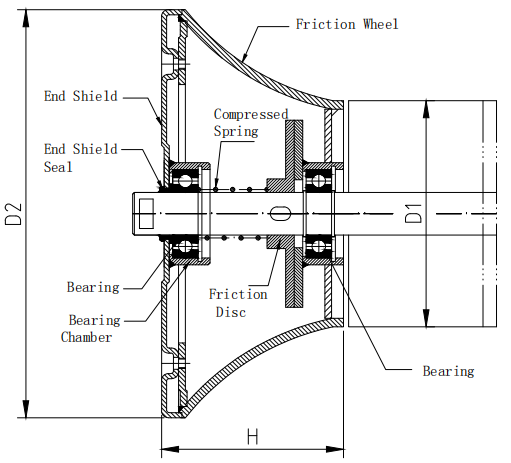 Afrikaans
Afrikaans  Albanian
Albanian  Amharic
Amharic  Arabic
Arabic  Armenian
Armenian  Azerbaijani
Azerbaijani  Basque
Basque  Belarusian
Belarusian  Bengali
Bengali  Bosnian
Bosnian  Bulgarian
Bulgarian  Catalan
Catalan  Cebuano
Cebuano  Corsican
Corsican  Croatian
Croatian  Czech
Czech  Danish
Danish  Dutch
Dutch  English
English  Esperanto
Esperanto  Estonian
Estonian  Finnish
Finnish  French
French  Frisian
Frisian  Galician
Galician  Georgian
Georgian  German
German  Greek
Greek  Gujarati
Gujarati  Haitian Creole
Haitian Creole  hausa
hausa  hawaiian
hawaiian  Hebrew
Hebrew  Hindi
Hindi  Miao
Miao  Hungarian
Hungarian  Icelandic
Icelandic  igbo
igbo  Indonesian
Indonesian  irish
irish  Italian
Italian  Japanese
Japanese  Javanese
Javanese  Kannada
Kannada  kazakh
kazakh  Khmer
Khmer  Rwandese
Rwandese  Korean
Korean  Kurdish
Kurdish  Kyrgyz
Kyrgyz  Lao
Lao  Latin
Latin  Latvian
Latvian  Lithuanian
Lithuanian  Luxembourgish
Luxembourgish  Macedonian
Macedonian  Malgashi
Malgashi  Malay
Malay  Malayalam
Malayalam  Maltese
Maltese  Maori
Maori  Marathi
Marathi  Mongolian
Mongolian  Myanmar
Myanmar  Nepali
Nepali  Norwegian
Norwegian  Norwegian
Norwegian  Occitan
Occitan  Pashto
Pashto  Persian
Persian  Polish
Polish  Portuguese
Portuguese  Punjabi
Punjabi  Romanian
Romanian  Russian
Russian  Samoan
Samoan  Scottish Gaelic
Scottish Gaelic  Serbian
Serbian  Sesotho
Sesotho  Shona
Shona  Sindhi
Sindhi  Sinhala
Sinhala  Slovak
Slovak  Slovenian
Slovenian  Somali
Somali  Spanish
Spanish  Sundanese
Sundanese  Swahili
Swahili  Swedish
Swedish  Tagalog
Tagalog  Tajik
Tajik  Tamil
Tamil  Tatar
Tatar  Telugu
Telugu  Thai
Thai  Turkish
Turkish  Turkmen
Turkmen  Ukrainian
Ukrainian  Urdu
Urdu  Uighur
Uighur  Uzbek
Uzbek  Vietnamese
Vietnamese  Welsh
Welsh  Bantu
Bantu  Yiddish
Yiddish  Yoruba
Yoruba  Zulu
Zulu conveyor belt pulley
Understanding Conveyor Belt Pulleys A Critical Component of Material Handling Systems
Conveyor systems are essential in various industries for the efficient movement of materials and products. Among the crucial components that ensure these systems function smoothly are conveyor belt pulleys. These devices play a significant role in the overall operation and performance of conveyor systems, making them indispensable in material handling processes.
What Are Conveyor Belt Pulleys?
Conveyor belt pulleys are cylindrical devices that are installed at either end of a conveyor system. They are designed to guide and support the conveyor belt, enabling it to move materials efficiently from one point to another. Pulleys come in various types, each serving a specific function, including drive pulleys, tail pulleys, and return pulleys.
1. Drive Pulleys As the primary power source of a conveyor system, drive pulleys are connected to a motor or gearbox. They provide the necessary friction to move the belt forward. The proper selection of a drive pulley is crucial because it affects the speed and efficiency of the conveyor.
2. Tail Pulleys Positioned at the end of the conveyor, tail pulleys help to maintain belt tension and support the belt as it returns. These pulleys are critical for ensuring that the belt operates smoothly and reduces the risk of wear.
3. Return Pulleys Located along the return path of the conveyor belt, return pulleys help guide the belt back to the drive pulley. They play an important role in reducing the strain on the belt and preventing misalignment.
The Importance of Quality Pulleys
conveyor belt pulley

The quality of conveyor belt pulleys can significantly impact the performance and longevity of a conveyor system. High-quality pulleys are designed to withstand heavy loads, resist wear and tear, and minimize maintenance requirements. They are typically made from durable materials such as steel or reinforced plastics, ensuring they can handle the rigorous demands of industrial environments.
Additionally, pulleys must be selected based on the specific characteristics of the conveyed materials, including weight, size, and texture. Using the wrong type of pulley can lead to insufficient tension, increased wear on the belt, and even system failures. Therefore, it is essential for engineers and operators to understand the different types of pulleys and their appropriate applications.
Maintenance and Upkeep
Regular maintenance of conveyor belt pulleys is vital for optimal performance. This includes checking for signs of wear, lubrication of moving parts, and ensuring that pulleys remain aligned with the conveyor system. Any misalignment can lead to increased friction, excessive wear on the belt, and energy inefficiency.
Furthermore, detecting issues early can prevent costly downtime and extensive repairs. Many companies implement a routine inspection and maintenance program to maximize equipment lifespan and maintain operational efficiency. This proactive approach not only ensures smooth operations but also contributes to overall safety in the workplace.
Conclusion
In conclusion, conveyor belt pulleys are indispensable components of material handling systems, influencing both efficiency and performance. Understanding their functions, importance, and maintenance needs can help businesses optimize their operations. As industries continue to evolve and demand higher levels of efficiency, the role of conveyor belt pulleys will only become more prominent. Investing in quality pulleys and adhering to a stringent maintenance regime will ensure that conveyor systems run smoothly, thereby providing a competitive edge in today’s fast-paced market.
-
Revolutionizing Conveyor Reliability with Advanced Rubber Lagging PulleysNewsJul.22,2025
-
Powering Precision and Durability with Expert Manufacturers of Conveyor ComponentsNewsJul.22,2025
-
Optimizing Conveyor Systems with Advanced Conveyor AccessoriesNewsJul.22,2025
-
Maximize Conveyor Efficiency with Quality Conveyor Idler PulleysNewsJul.22,2025
-
Future-Proof Your Conveyor System with High-Performance Polyurethane RollerNewsJul.22,2025
-
Driving Efficiency Forward with Quality Idlers and RollersNewsJul.22,2025





























